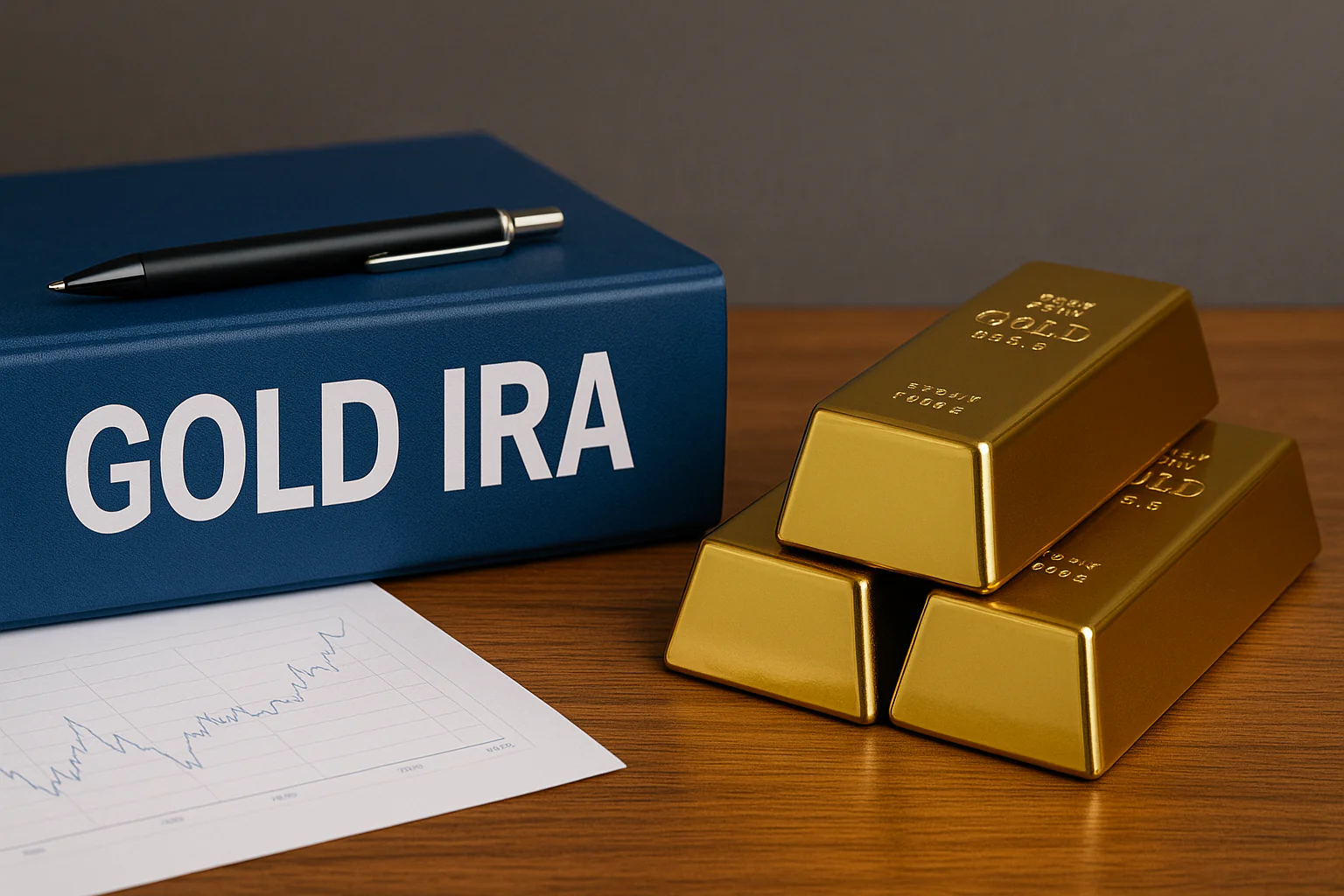Gold IRA
Gold IRA vs. Physical Gold: Which Is Better for 2025?

Published
3 days agoon
Table Of Contents

As concerns about inflation, economic uncertainty, and currency instability persist, many investors are turning to gold as a means to preserve their wealth. Two of the most common approaches are investing through a Gold IRA or purchasing physical gold directly.
While both offer exposure to the same underlying asset, they differ significantly in terms of control, fees, taxes, storage, and liquidity. For those considering either, it is important to understand the pros and cons of each, which can help you decide the strategy that best aligns with your financial goals.
What Is a Gold IRA?
A Gold IRA is a self-directed individual retirement account that allows you to hold IRS-approved precious metals like gold, silver, platinum, and palladium. Unlike traditional IRAs, which typically hold stocks, ETFs, and bonds, a Gold IRA provides investors with exposure to physical bullion, such as American Gold Eagles or Canadian Maple Leafs, stored in a secure, IRS-approved depository.
Gold IRAs offer tax advantages (depending on whether they are traditional or Roth) and are typically used as long-term wealth preservation vehicles within retirement portfolios.
To dive deeper into Gold IRA variants, make sure to learn about self-directed options.
What Is Physical Gold Ownership?
Physical gold refers to coins, bars, or rounds purchased directly by an individual and held personally at home, in a private vault, or via insured storage. This method gives you full ownership and access to your gold at any time, offering maximum control and relatively quick liquidity. Let’s break down the key differences between the two strategies.
Head-to-Head: Gold IRA vs. Physical Gold

1. Liquidity
Physical gold wins here. You can sell it at any time through a dealer or private sale, often receiving cash within hours or days. Gold IRAs, however, require a formal distribution process. Note that if you are under 59½, early withdrawals could trigger taxes and penalties unless it's a qualified distribution.
2. Storage & Security
With a Gold IRA, your metals are stored in IRS-approved depositories that offer full insurance, 24/7 surveillance, and dual-control protocols. Physical gold owners are responsible for safekeeping, which may involve high-end home safes, vault rentals, or the services of a third-party custodian. Without insurance, the risk is significantly higher.
3. Tax Treatment
This is a significant advantage of Gold IRAs. Traditional Gold IRAs grow tax-deferred, and Roth Gold IRAs grow tax-free. Physical gold, on the other hand, is taxed as a collectible. This means that it is subject to a maximum 28% long-term capital gains tax, which is higher than the typical tax rate on investment income.
4. Fees
Gold IRAs come with custodial, setup, and annual storage fees. These can range from $100 to $500 per year or more. However, they are often stable and predictable. Physical gold typically involves upfront premiums, and depending on where you store it, you may also incur additional costs for insurance and storage.
5. Accessibility and Control
Physical gold allows total autonomy. You can hold it, gift it, or liquidate it as you wish. A Gold IRA, by contrast, requires a custodian to manage the assets and disbursements. Access is limited by IRS rules, especially before retirement age.
Which One Should You Choose in 2025?
Your choice ultimately depends on your goals:
If you want long-term, tax-advantaged growth inside a retirement account and are not concerned about immediate access, a Gold IRA is likely the better fit.
If you value complete control and accessibility, even at the expense of tax efficiency, then physical gold may be a better option for you.
Many investors in 2025 are adopting a hybrid approach—utilizing a Gold IRA for retirement planning and maintaining a smaller amount of physical gold for emergencies or short-term use. Just make sure to avoid these common mistakes.
- Do not store IRA metals at home—this violates IRS rules and could result in penalties.
- Avoid numismatic coins unless you fully understand the collectible market—they are often overpriced.
- Always ask for a written fee breakdown from custodians or dealers.
Also, protect yourself from costly mistakes by learning about common Gold IRA scams.
Daniel is a big proponent of how blockchain will eventually disrupt big finance. He breathes technology and lives to try new gadgets.











